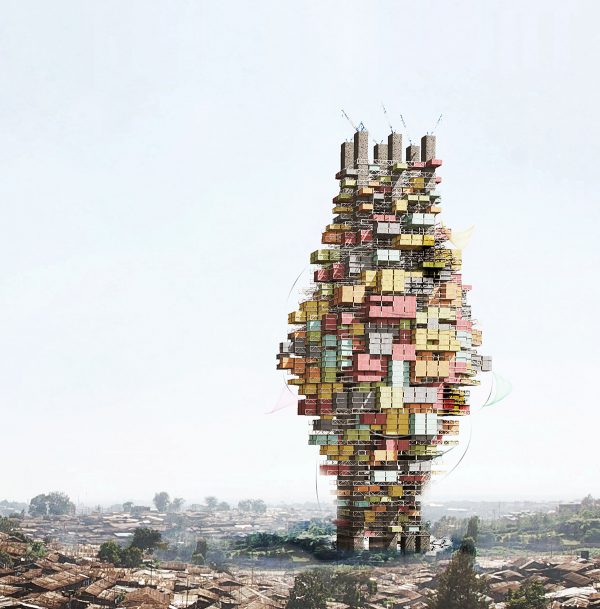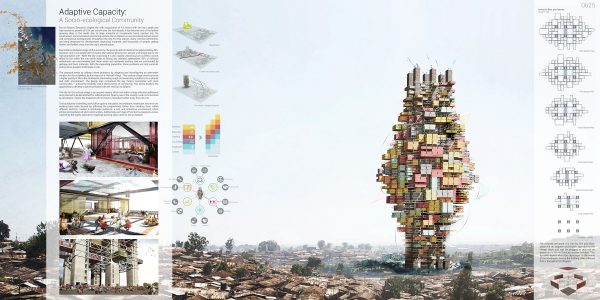Honorable Mention
2017 Skyscraper Competition
Adriann Jeevananthan
United Kingdom
Dar es Salaam, Tanzania’s largest city, with a population of 4.5 million, with the city’s stable and high economic growth of 6.5% per annum over the last decade, it has become one of the fastest growing cities in the world. Due to large amounts of investments being injected into the construction, communication and mining sectors, Dar es Salaam is now prioritising infrastructural and commercial developments throughout the city. For this reason, many informal settlements are being destroyed for development, displacing hundreds and thousands of people, getting further and further away from the city’s infrastructure.
Due to Dar es Salaam’s huge shift in economy, the poverty rate has declined to approximately 28%. However, one in six people still live below the national poverty line, almost unchanged due to the high population rate. While the city is growing, it is also rapidly urbanizing, but countless cannot afford to live within the city which leads to falling into informal settlements. 80% of informal settlements are overcrowded, lack clean water and adequate sanitary and are surrounded by garbage and toxic materials. With the expanding population, these problems will only escalate, putting more people’s livelihoods at risk.
The proposal seeks to address these problems by adapting and reconfiguring an alternative solution for slum-dwellers, by the means of a ‘Vertical Village’. This vertical village aims to provide a higher quality of life to the inhabitants, eliminating rough and unsanitary conditions for a cleaner and safer environment. The design also recognises the key factors associates with slum communities – autonomy, flexibility and a strong sense of community. This offers dwellers the opportunity to develop in synchronisation with the rest Dar es Salaam.
The boundaries of dwelling, work/office spaces, education and childcare, healthcare, leisure in one building have been blurred by diffusing the programmes, rather than isolating them within different sections, creates a distributed resilience, a rich and interactive environment which echoes atmospheres of slum communities. Additionally, each type of function is assigned a colour inspired by the highly saturated Tingatinga painting style, native to Dar es Salaam.
A vast amount of high-rise buildings in hot climates mimic western models with sealed facades, reliant on air-conditioning and have little solar shading. This proposal intends to protect inhabitants and take advance of the weather conditions of Dar es Salaam. The building provides a naturally ventilated, perforated, indoor-outdoor and shaded model to suite the tropical climate.
The project is modeled by slum-dwellers autonomous lives, by being self-sufficient, in mimicking nature’s closed loop system. The Vertical Village is constructed above an unused swamp, which will take advantage of the water by the means of agriculture and aquaculture. Small pods are used to create nested ecologies, broadening the variety of vegetation grown in Dar es Salaam and Tanzania, offering people a more nutritious diet.
A crucial part of the scheme is to teach occupants about safer and cleaner living, so they can share the knowledge and skills they have been offered to other communities. Small hubs of work stations, dwellings, leisure, childcare and healthcare facilities will be erect in and around the city and further, creating translocal, transnational and transglobal civic networks between poor communities.

















